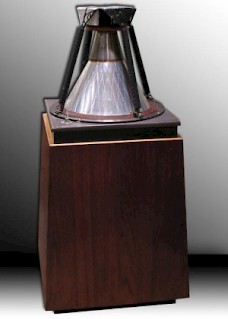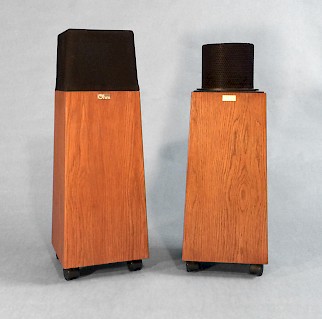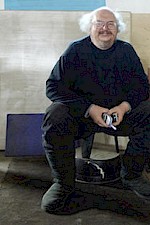Dispersion: What Is It and How Is It Important?
Dispersion, as it applies to audio, is the direction the sound radiates from a speaker.
The dispersion almost always varies with frequency. With mono-poles (most woofers and subwoofers), the deepest bass is omnidirectional: the sound radiates equally in all directions. As frequency increases, you need a smaller and smaller speaker to stay omni-directional. At 1 kHz, it takes about a 1.5” diameter speaker (including its enclosure) to be omnidirectional. At 20 kHz, the speaker, including its enclosure, needs to be less than 1/8 inch! This excludes the theoretical (but non-existent) pulsating sphere that could be any diameter if it could be made.

The first Bose speaker, the 2201 in 1966, attempted to simulate a pulsating sphere with many drivers nested into a corner where the wall reflections filled in the rest of the sphere. It was a sonic and commercial failure. The Ohm A, the first commercial speaker sold using Lincoln Walsh’s patented (filed in 1964) design closely simulated a pulsating sphere (or more like a donut). The center of the donut was placed about 42” above the floor and the sound radiated out equally in 360 degrees horizontally. Its vertical dispersion was restricted in the treble. This was a sonic success and influenced the design of almost all future Ohm products.
Does that mean an omnidirectional dispersion pattern at all frequencies is best for music reproduction in a home? No! Even if the frequency response was perfectly flat and the dispersion was omnidirectional at all frequencies, the reflections of the room surfaces would add lots of interference and standing wave patterns throughout the room. This will both color the balance and obfuscate the imagining. These problems are minimized in very large rooms, with the speakers far from any walls. A slightly disturbing imaging effect does take place in this optimized position: the center image stays in front of every listener. Even if they move from the left speaker to the right, the center image moves with them. The restricted vertical dispersion in the Ohm A turned out to be a benefit, as it reduced the floor and ceiling reflections.

Ohm had fifteen years’ experience with omni-directional speakers with thousands in people’s homes before introducing the Walsh 2 with a controlled dispersion pattern (varying with frequency) to resolve this real-room conflict (and a few other problems). The dispersion pattern we use is necessary to achieve Full Room Stereotm . Even so, that benefit will not be present in the absence of a coherent wave front. But, coherence is another blog…
Enjoy & Good Listening!
John
Subscribe to Ohm News & Views to get the latest posts in your inbox
John Strohbeen Author
John Strohbeen was the President and Chief Engineer of Ohm Acoustics from 1978-2023.


